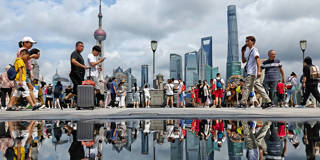The US and China must work through many differences, which will not happen overnight. In the meantime, the escalating tensions between their governments make it more important than ever to preserve in-person interactions between ordinary Chinese and Americans.
HONG KONG – On a recent trip to China with my Northwestern Kellogg students, we were all struck by how few Americans had returned to the country since the end of its zero-COVID policy in December 2022.
In Shanghai, our tour guide had hosted only one other US school group, and she expected to have only one more this year – a marked decline from the 30-plus she booked each year prior to the pandemic. In Guilin, where the iconic mountains, a UNESCO World Heritage site, had previously been among the most visited places on Earth, we were allegedly the first American group to visit since the beginning of 2020. Only two more are expected this year. One hopes these are low estimates and that more have and will come. But there is no denying that the number of Americans traveling to China, which plummeted during the pandemic, has been slow to recover.
This sharp decline comes at a time when US-China relations have reached their lowest point since President Richard Nixon visited Chairman Mao Zedong in 1972. The public discourse in both countries has become almost exclusively about zero-sum competition, if not outright hostility. While US politicians and commentators from across the political spectrum portray China as the economic and geopolitical threat, Chinese media insist that American democracy is false and that the US is unfairly containing China’s growth and development.

HONG KONG – On a recent trip to China with my Northwestern Kellogg students, we were all struck by how few Americans had returned to the country since the end of its zero-COVID policy in December 2022.
In Shanghai, our tour guide had hosted only one other US school group, and she expected to have only one more this year – a marked decline from the 30-plus she booked each year prior to the pandemic. In Guilin, where the iconic mountains, a UNESCO World Heritage site, had previously been among the most visited places on Earth, we were allegedly the first American group to visit since the beginning of 2020. Only two more are expected this year. One hopes these are low estimates and that more have and will come. But there is no denying that the number of Americans traveling to China, which plummeted during the pandemic, has been slow to recover.
This sharp decline comes at a time when US-China relations have reached their lowest point since President Richard Nixon visited Chairman Mao Zedong in 1972. The public discourse in both countries has become almost exclusively about zero-sum competition, if not outright hostility. While US politicians and commentators from across the political spectrum portray China as the economic and geopolitical threat, Chinese media insist that American democracy is false and that the US is unfairly containing China’s growth and development.